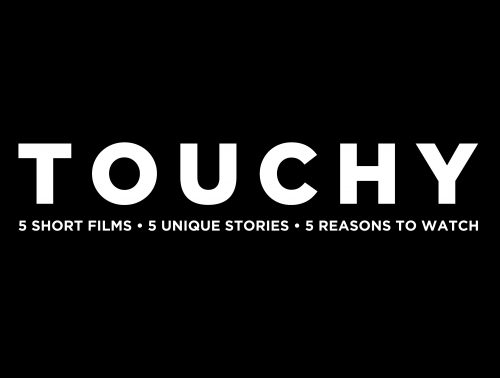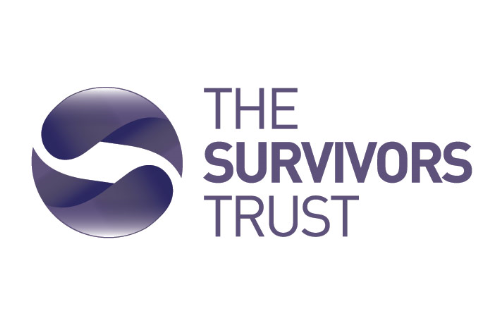TOUCHY
Five short films, five unique stories, five reasons to watch.
Touchy is a project made by 20 Stories High in collaboration with six Liverpool-based artists. From 13th May 2021, we’ll release each film weekly, and they will be available to watch on YouTube and Instagram for a while after. Starting with Jemell’s story and moving through the weeks to Max’s story at the end. Self-care toolkits are available for all five films (or as one combined toolkit).
About Touchy
A mash up of theatre and music video – interweaving beats, drama, poetry, animation, visuals and original music.
We follow the journey of six characters as they navigate their way through the tactile highs and lows of young adulthood.
Commissioned by Wellcome Collection in association with Unity
Why this toolkit?
This toolkit has been designed to offer support to anyone engaging with the film, especially anyone who might be impacted by its content. We hope this toolkit provides you with specialist resources and tools from the professionals that may help.


Jemell’s Story
Jemell’s Story blends Hip-Hop and storytelling to tell the story of a young Black lad living with undiagnosed autism.
Content Warning:
Jemell’s story contains themes of racism, mental health and substance abuse. Also contains strong language and the use of the “N” word. Contains flashing images.
Suitable for ages 13 plus.
There is a detailed breakdown of what story Jemell tells at the end of this page, please read it ahead of watching if you’d like some further information.


Go at your own pace:
If you don’t want to watch this all at once, maybe consider watching the film a bit at a time. Jemell’s story is in three parts and is nine minutes long in total. It’ll be available on YouTube and Instagram for the next few years at least. Do what feels right for you.
Watch with someone:
Watching with someone who knows you and any connections you may have to the theme of this film may help when it comes to recognising if you need to switch it off, or if you need support. Or if you can’t watch with someone, maybe message someone ahead of watching, and let them know you might call them if you need support.
Read a summary of the film:
If you’d like to know the content before you watch, so that there’s nothing unexpected, you’ll find a full breakdown of the film at the bottom of this page.
Remember it’s your choice:
Remember it’s your choice to watch this film – you’re in the driving seat – there should never be any pressure to do so. You are in control, even if you might not feel it. If you’re feeling overwhelmed at any point, turn it off and try some grounding techniques.
Remember your breath:
If you become triggered, breathing is a great way to bring yourself back into a state of calm, lower your heart rate and create space in your brain to start thinking things through at an easier pace. Try breathing in for four seconds, holding your breath for four seconds, exhaling for four seconds and holding again. Repeat this for as long as you need until your breath feels in control again. Lots of mobiles & smart watches offer apps which can help you with this.
Get some fresh air:
Going for a walk or even just standing outdoors can help.
Get help:
If you notice that you’ve become overwhelmed and the techniques suggested here, and the ways you usually bring yourself back into a state of calm, then recognise that moment, and consider getting professional support. See the bottom of this document for helplines and organisations who can help.
Advice taken from The Survivor’s Trust blog: Taking Care of yourself & I May Destroy You – find more advice and tips here: https://bit.ly/3v6rw2H – this article was created by The Survivor’s Trust in order to help viewers in making the choice to watch the TV series I May Destroy You. Although our Touchy films have differing themes, the ideas and tips are relevant for lots of shows and films that may be triggering.


Helplines: Autism & ADHD
- National Autistic Society www.autism.org.uk
- Child Autism www.childautism.org.uk
- Ambitious About Autism www.abitiousaboutautism.org.uk
- Actually Autistic (Facebook forum group) www.facebook.com/actuallyautistic
- ADHD Foundation www.adhdfoundation.org.uk 0151 541 9020
- Support Groups for ADHD www.ukadhd.com
- Attention Deficit Disorder Information and Support Service (ADDISS) www.addiss.co.uk 020 8952 2800
Helplines: Racism & Inequality
- Stop Hate UK www.stophateuk.org 0800 138 1625
- Anthony Walker Foundation www.anthonywalkerfoundation.com 0151 237 3974
- Victim Support www.victimsupport.org.uk 0808 1689 111
Not sure where to turn?
- The Mix offers a wide range of support for young people under the age of 25. www.themix.org.uk (for 1-2-1 chat and messenger) / 0808 808 4994
- Useful apps: Hub of Hope / Woebot / Headspace / Calm




Synopsis of the Film: Jemell’s story
Jemell’s story is a mix of spoken word and rap, and he speaks in third person throughout the piece.
We start with Jemell performing against a background of plastic bubble wrap, as if in a music video. He is recalling about what it was like growing up for him – noticing that daily tasks and interactions are difficult for him. He starts to realise that he feels ‘different’ to others – both on the inside and out.
We then see Jemell sat in a stake park, reflecting on his teenage years. He talks about how his ‘constant tapping’ was annoying to everyone – his family, peers at school and teachers. Jemell highlights one teacher that was different from the rest – Mr Jones – who Jemell felt understood Jemell’s needs and could see the potential in Jemell as a musician and creative.
Jemell recalls a moment where Mr Jones gives Jemell an ‘SP 404’ – which is a small, box-shaped sampler which is used by musicians to create sounds and music. We see many SP 404s rain from the sky visually. Jemell describes the bond he felt with Mr Jones as a result of finally feeling understood by someone. Jemell talks about how he really took to creating music: ‘there was no turning back’. He goes on to talk about how other young people in school would get jealous, and that they couldn’t understand Jemell. Jemell talks about how his social interactions with peers became violent – no longer arguing but fighting, which resulted in Jemell being excluded from school. This meant Jemell could no longer use the SP 404 in school, and so he would no longer make music. With nothing positive left for Jemell, he describes how he becomes ‘a reckless individual’.
We then seen Jemell back in his music video mode, against a shiny background. The next rap talks about Jemell’s struggles after being excluded – his anger problems, family & relationship issues and his substance abuse. Jemell talks about his struggles through a medical assessment – and how he felt that he wasn’t fitting the stereotypes that society wanted to place upon him.
We then move to Jemell at the beach. He talks about how this ‘reckless’ time of his life affected his mental health, causing him to become withdrawn and suffering with depression. We then hear of a turning point in Jemell’s life which was his brother moving back home – who was able to help Jemell back in the ‘right direction’ – helping him to feel understood and confident about his identity and recognising his neurodiversity. With this new support, Jemell tells us about how he got a job in a shop that supports his needs properly, and the difference this had made to him. With the money from his job, Jemell buys himself an SP 404 to make music.
We visually see Jemell live streaming a jam session on his SP404 – creating bouncing hip hop melodic beats. He looks at home and comfortable with where he’s at.
Jemell finishes his story by doing a shout to all the high-flying individuals on the spectrum – and reads out a list of celebrities who have been diagnosed or are suspect to have/had autism.
Further Information:
For more information about Neurodiversity, Autism, ADHD, intersectionality of Neurodiversity and race, and how you can support someone with Neurodiversity, please read our full Self Care Toolkit available via the link below.
Touchy #1: Jemell's Story - Self Care Toolkit
Photos by Wesley Storey (Please note these photos were taken in 2019, prior to implementation of Covid-19 restrictions).
Artwork by Joe Harper.
Filmed by Kofi Owusu (Go Play Studio).


